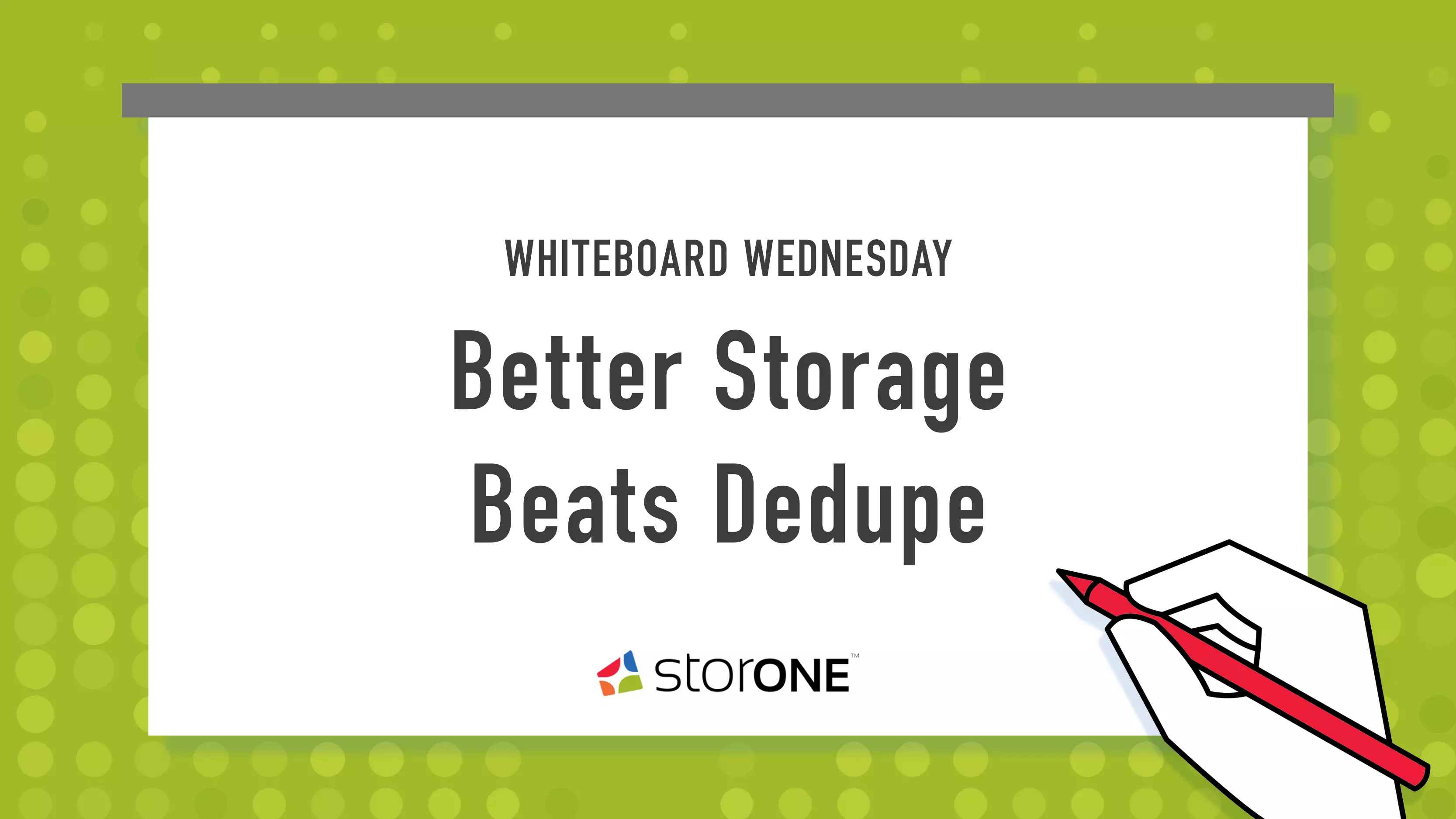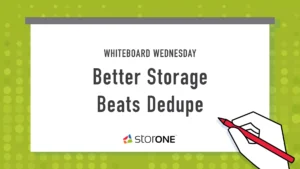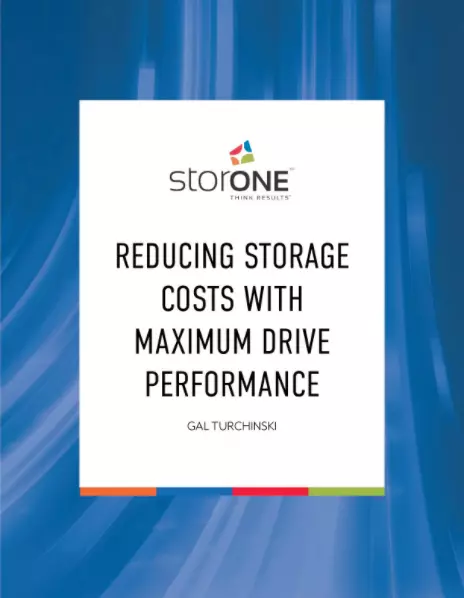IT Professionals are learning that when it comes to capacity efficiency, better storage software beats dedupe. The problem with deduplication is that it imposes a significant performance impact and may put data at risk. There are other ways to improve capacity efficiency that work across every workload and data type. Using better storage software enables them to receive better capacity efficiencies without compromising performance or data integrity.
In our last article, we discussed how efficient RAID can provide better capacity optimization than dedupe. This entry will look at other ways that better storage software beats dedupe.
High per Drive Performance is better than Dedupe
Most flash drives on the market today can deliver hundreds of thousands of IOPS per drive. That means that six or seven of these drives in a system should provide 500,000 IOPS or more. However, most AFAs can’t surpass a couple of hundred thousand IOPS in an entire system with dozens of flash drives. Why? Their inefficient storage software is dragging along the deduplication algorithm like a boat anchor. To help increase drive count, most AFAs do not take advantage of the high-density flash drives on the market today. Instead, they force the customers to use lower capacity drives to increase drive count artificially. Then, customers must use deduplication to justify the lack of performance efficiency. While it is difficult to factor in the cost of low per drive performance, it is fair to say that it is significant.
At StorONE, we deliver more of the per drive performance potential than anyone else on the market. It is common for us to deliver 500,000+ IOPS with as few as six flash drives. That means less data center floor space, less power, and less cooling. Capacity is going down in price, while power and cooling are increasing. The place to save the most money is power and cooling. To learn more about the ROI of maximizing drive performance, check out our white paper “Reducing Storage Costs with Maximum Drive Performance.“
Snapshots are better than Dedupe
There are some cases where deduplication is better than snapshot technology. On the whole, however, snapshots can deliver more functionality. In fact, with our vSnap technology there is no performance impact. Our snapshot technology uses an advanced redirect on write algorithm. This algorithm provides the capability to sustain millions of snapshots with no effect on production performance. Remember, our performance commitment is hundreds of thousands of IOPS on a handful of flash drives, and we maintain that performance no matter how many snapshots are active. Our customers use vSnap in areas where they might benefit from deduplication, like virtual machine instances. They also use it for copy-data-management use cases, like providing capacity-efficient copies of databases to test, dev, and QA departments.
vSnap is so powerful that when combined with our cost-effective replication technology, vReplicate, you can replace the entire backup process with snapshots while still adhering to the “3-2-1” rule of backup. It’s hard to calculate the savings of eliminating or reducing your dependency on backup, but as with performance, it is significant. To learn more about how to replace backups with snapshots and replication, check out our on-demand virtual whiteboard session “Using Replication for more than DR.“
Tiers are better than Dedupe
Despite AFA vendors’ repeated price parity claims with hard disk drives, the reality is that hard disks are significantly less expensive than flash drives. This reality is true even for StorONE. On our TRUprice configuration and pricing site, you’ll find that you can get a 500TB AFA for less than $300,000. This is a fantastic price considering its performance and features. By comparison, for $50,000 less ($249,000), you can double your capacity to get a 1.1PB Hybrid Array.
The hybrid configuration includes a generous flash area (92TBs) and 1PB of hard disk drive capacity. The flash area is so large that the chances of you not accessing performance-critical data from the flash tier are almost nonexistent. You can use the hard disk tier to automatically move less frequently accessed data from the expensive flash tier, to store data from workloads, and to store old snapshots for years. This is possible because we also automatically tier snapshots. Our vRAID technology provides similar benefits to hard disk technology as it does to flash, with no hot spares, and rapid rebuilds.
Conclusion
Deduplication is a technology whose time has passed. When we used to measure the cost of flash capacity in dollars per GB instead of cents, it made sense. It also made sense when drive density was relatively low, so maximizing drive capacity helped with the data center footprint. There are also future threats to the technology like application side encryption and legal unknowns as policies like GDPR take full effect. In the end, the net gain of deduplication is no longer worth the effort. Consequently, a storage software solution rewritten to deliver maximum resource efficiency is better than deduplication.







